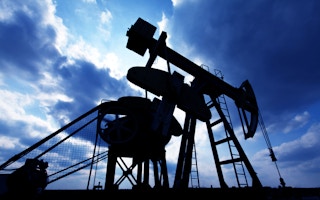LONDON – The developed world is slowly emerging from the Great Recession, but a question lingers: How fast and how far will the recovery go? One big source of pessimism has been the idea that we are running out of investment opportunities – and have been since before the 2008 crash. But is that true?
The last big surge of innovation was the Internet revolution, whose products came onstream in the 1990’s. Following the dot-com collapse of the early 2000’s, speculation in real estate and financial assets – enabled by cheap money – kept Western economies going. The post-2008 slump merely exposed the unsoundness of the preceding boom; the mediocrity of the recovery reflects the mediocrity of previous prospects, coolly considered. The risk now is that a debt-fueled asset spike merely perpetuates the boom-bust cycle.
The economist Larry Summers has reintroduced the term “secular stagnation” to describe what awaits us. By the mid-2000’s, Summers argued at a recent International Monetary Fund conference, the average prospective return on new investment in the United States had fallen below any feasible reduction in the Federal Reserve’s benchmark interest rate.
That remains true today. We may be in a permanent liquidity trap, in which nominal interest rates cannot fall below zero, but the expected rate of return to investment remains negative. Unconventional monetary policies like quantitative easing may inflate a new generation of asset bubbles, but the underlying problem – negative returns to new investment – will not have been solved by the time the next crash comes.
So the problem is poor investment prospects. Why? In the 1930’s, the economist Alvin Hansen argued that opportunities for new investment in already-rich countries were drying up. Investment growth had depended on population growth, technological innovation, and westward expansion.
With the closing of the frontier and static populations, growth would depend on innovation; but future innovation would require smaller inputs of capital and labor than in the past. In other words, the returns to capital were bound to fall as it became more abundant relative to population. In this situation, full employment could be maintained only by running continuous fiscal deficits.
John Maynard Keynes held a different view. In 1945, he wrote to T.S. Eliot: “[T]he full employment policy by means of investment is only one particular application of an intellectual theorem. You can produce the result just as well by consuming more or working less. Personally, I regard the investment policy as first aid.…Less work is the ultimate solution.”
Developed countries’ strong postwar investment performance dispelled fear of secular stagnation. But this occurred after a world war that had created huge pent-up demand for new equipment, transport infrastructure, and household appliances, together with a military-industrial complex that armed the West during the Cold War.
“
As a result of the shale-energy boom, “over $216 billion in total will be invested in the midstream and downstream oil and gas industries” from 2012 to 2025
The real rate of return to capital may have started to decline by the early 1970’s; productivity growth certainly has slowed since then. Some crucial changes in the political economy of Western capitalism in the 1980’s can also be viewed in this light: the rise of neoliberal ideology, the growing inequality of wealth and incomes, the increase in structural unemployment, the growth of financial services, globalization, the invention of post-Cold War threats to sustain military spending, and so on.
The question today is whether a new upsurge of investment will come to our rescue. Optimists point to the shale-energy revolution in the US.
The McKinsey Global Institute has identified shale energy as a “game changer” for the world economy, estimating that it could boost America’s GDP by as much as four per cent ($690 billion) per year and add 1.7 million permanent jobs to the labor market by 2020. From 2007 to 2012, North American shale-gas production grew at an average annual rate of more than 50 per cent. As a result, the share of shale gas in America’s overall gas production rose from just 5% in 2007 to 36% in 2012. With the share of imports in US natural-gas consumption dropping from 16.5% in 2007 to 11% in 2010, America is on the path to energy self-sufficiency.
Likewise, a September 2013 report by IHS concludes that midstream industries like transportation and downstream industries like manufacturing and chemicals are also receiving a massive stimulus. As a result of the shale-energy boom, “over $216 billion in total will be invested in the midstream and downstream oil and gas industries” from 2012 to 2025. Nearly 380,000 of the 2.1 million jobs that shale-related industries generated in the US in 2012 , were created in these areas.
Beyond this, the most dramatic impact of shale oil and gas on the economy has been the fall in energy prices. In the US, the price of natural gas has fallen to $4 per MMBtu, from $13 in 2008, boosting household purchasing power. IHS estimates that in 2012, developments in the shale-energy industry increased households’ real disposable income by more than $1,200. Thus the shale revolution represents a huge stimulus for America, in terms of investment, exports, and a reduction in energy costs.
I am not in a position either to judge the quantitative impact of shale energy on the US economy and, via growth there, on the rest of the world, or to comment on its geopolitical consequences or net effect on carbon emissions. But it does seem to me that contemporary apostles of secular stagnation like Summers and Paul Krugman at least ought to be taking the shale-energy revolution into account.
Robert Skidelsky, Professor Emeritus of Political Economy at Warwick University and a fellow of the British Academy in history and economics, is a member of the British House of Lords. This post originally appeared here.

















